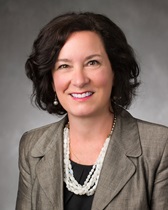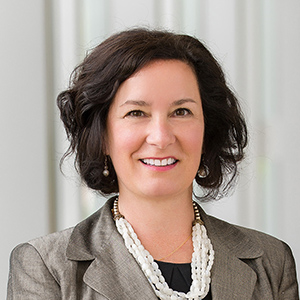
Hello and thank you! What a terrific evening.
I’m mindful that we are gathered together on the historic lands of the Dakota and Anishinaabe people, so please allow me to greet you in the language of my own Lakota relatives:
Chante waste, tima heya wo.
Which means, “Come in with a good heart.”
My sincere thanks to Joe Hobot for the invitation to be here tonight. I also want to acknowledge my sister Mary Kunesh-Podein, a state legislator who two days ago introduced historic legislation for Missing and Murdered Indigenous Women. This is a very important first step toward protecting our sisters and creating systems of accountability for our communities across Minnesota. Thank you Mary!
Joe has asked me to share some thoughts about how our urban American Indian communities are shaping some of the most significant impacts for our Native people – from health, to housing, to education and workforce development. I call this the Urban Indian Pillar of Economic Development.
Just as Native people move freely and frequently from homelands to urban areas and back again, so do their ideas. Urban centers like the Twin Cities thus serve as cross-tribal hubs of innovation, creativity, and connection for all of Indian Country and the whole Native population. So it is fitting that tonight we recognize and celebrate the vital vibrancy of the urban Indian community.
We at the Center for Indian Country Development support the prosperity of Native people through actionable research and community collaboration. For the past three years, we’ve been intently focused on education and housing for Indian Country. We can get pretty nerdy at times with our data and charts, but within those numbers, we know there’s a real, lived experience that radiates far beyond the reservation into our urban communities. Let’s see if I can connect the dots. First, I need to say that my comments and opinions are those of my own, and not necessarily of the Federal Reserve Bank of Minneapolis.
Many of us share a common story of a family migration from the reservation to the city, my own family included. Long ago my grandmother was part of a continuing and largely unnoticed mass migration of American Indians, whose move to urban centers over the past several decades has fundamentally changed both reservations and cities.
The Indian Relocation Act of 1956 was the impetus for the largest relocation of Native Americans now living in urban areas. Though the law didn’t force people to leave their reservations, it made it hard for families to stay by ending federal funding for reservations’ schools, hospitals, and basic services—along with the jobs they created.
Thousands of tribal citizens left their reservations – some involuntarily and some voluntarily. They left for boarding schools; they left to serve in the Armed Services; they left to find paying jobs. And when they left, they found each other again and re-established familiar connections. My own family is the product of this migration from the Standing Rock reservation. One of my aunts started the Sioux Club in Chicago, which eventually became the American Indian Chamber of Commerce.
Now more than 7 of 10 Indians and Alaska Natives live in a metropolitan area, according to the Census Bureau, compared with 45 percent in 1970 and 8 percent in 1940.
Minneapolis was one of the first cities chosen for the federal relocation program. While many Native people were simply unprepared for the challenges of city life –often encountering discrimination and denied good jobs or secure housing – a tight-knit Native American community flourished. Minnesota’s large Ojibwe and Lakota tribes made up the majority of the Twin Cities Indian community, but we know well that the community also welcomed and drew strength from the people of many other tribal nations who came here from across the country. Folks like Mike Goze from the Ho-Chunk Nation of Wisconsin.
Our current metro Indian population, about 2 percent of the total, is more integrated than in most other metropolitan areas. And both sides of the river boast the kind of thriving intellectual, cultural, and political communities that will shape our futures as American Indians.
Native Americans now make up 7 percent of residents in the Phillips neighborhood in the southern part of Minneapolis. Its home to the Minneapolis American Indian Center, the Native American Community Clinic, the Minnesota Indian Women’s Resource Center, and the American Indian OIC.

New leadership is emerging too. Recently, we’ve had Native American City Council members; several Native American legislators; a police chief who was part Indian; a state Supreme Court Justice; and, of course, now a Native American Lt. Governor!
In terms of business and community development, many individuals and organizations have become the leaders in economic and cultural innovation. For example:
-
The Tiwahe Foundation
-
The American Indian Community Development Corporation and BiiGiiWin
-
Woodlands Bank, a Native owned and Native serving financial institution
-
The Native Governance Center, supporting tribal leadership both on and off the reservation
-
The American Indian Chamber of Commerce
-
The Metropolitan Urban Indian Directors
-
Louise and Heid Erdrich and the Birchbark Bookstore
-
Sean Sherman, as well as the Native Seeds of Health Initiative of the SMSC
-
Our own Healthy Children, Healthy Nations initiative
-
And many, many more
The good news is that ideas and energy from new leaders and organizations like these have helped Indian Country realize two generations of steady positive economic growth. Since 1990, Indian Country has outpaced the rest of the United States, with significant gains in almost every sector, including real per capita income, median household income, employment, and infrastructure. As a result, income growth-based demand has created more demand for businesses, jobs, and housing and options for homeownership. Our American Indian education achievement is up, but gaps have not narrowed much.
It will take even more new ideas, and an intentional development and investment approach, to meet these growing needs. It also will take all of you, our community leaders, to help guide those investments and make them matter.
I’m so happy to be part of this effort and community.
Thank you.


